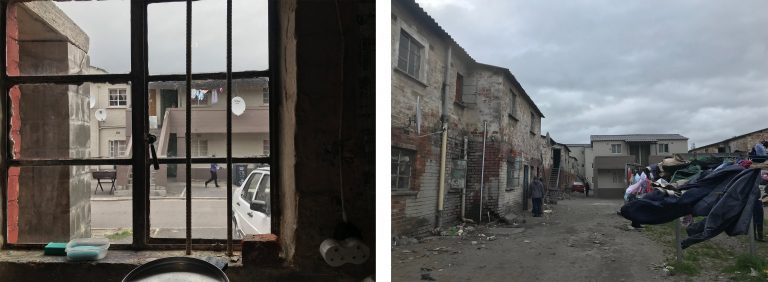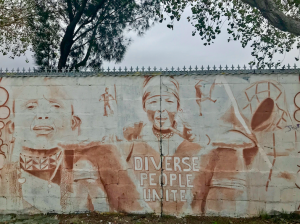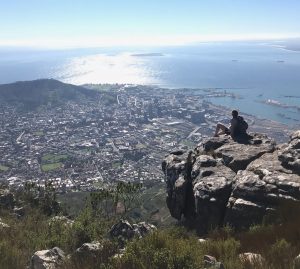Published on July 11, 2019

“Ten percent of all South Africans — the majority white — owns more than 90 percent of national wealth… Some 80 percent of the population — overwhelmingly black — owns nothing at all.” — New York Times
On April 27, 1994, Nelson Mandela and the African National Congress (ANC) won the first multiracial democratic election in South Africa’s history, bringing an official end to 46 years of apartheid. While the policies of deeply institutionalized racism were overturned 25 years ago, the economic and social impacts of apartheid are still very much present in South African society, and have contributed to ever-widening gaps between black and white South Africans in multiple ways. It is broadly recognized that apartheid was the ultimate form of structural violence that forced hundreds of thousands of black South Africans into informal housing on land that they had no legal claim to. Last summer as a UW student I studied abroad in Cape Town, South Africa and was struck by the inequality I witnessed between most black and white South Africans. Studying poverty and development within the context of post-apartheid South Africa while in Cape Town was a very powerful experience that piqued my interest in housing justice and inequality overall. This blog is a summary of my learning and thinking, and is offered as a means of engaging urban analysis in student learning.
The core of apartheid policy and power revolved around land. Officially beginning in 1948, black South Africans were stripped of their land and relocated to racially segregated developments far outside the city, where homeownership was practically impossible. Between 1960 and 1980, 3.5 million people were forcibly removed by police officers from city centers to rural townships. In District Six, an inner-city residential neighborhood in Cape Town, over 60,000 people were relocated by the national government to townships 20 miles away after the area was declared “whites only” by apartheid government authorities. Such townships became extremely overcrowded and were distinctly cut off from infrastructure and urban utilities and services such as water and electricity, leaving people to fend for themselves (Abel, 2015 [pdf]). In the aftermath of apartheid, most land was left in the hands of the white elite due to the ANC’s resistance to large-scale land transfers. The party had originally promised better housing, schools, and other services for the poor and underserved black communities, but then, once elected, party leaders pursued policies to attract and maintain international investment, in response to a large decline in economic investment and support from major Western powers during the apartheid years. ANC leadership were apparently unwilling to pursue any policy that might be considered radical by international investors, including those that might privilege coloured and black communities. In the years before the new millennium, international investors pursued neoliberal economic policies with the stated intent of helping less affluent countries gain a foothold in the global economy. Economic globalization in post-apartheid South Africa meant scaling back government services and prioritizing neoliberal privatization (Besteman, 2008 [website]).

A mural on the wall surrounding Langa, the largest township in Cape Town, home to around 53,000 people on 1.2 miles² of land.
Between 1994 and 2004, the ANC funded nearly 2 million new homes for black South Africans, but the housing was developed within the existing townships, reinforcing the segregated geographies established under apartheid. People in these settlements do not legally own the land they live on, have little access to public services and utilities, and often endure high costs and travel times to commute to the city for jobs that pay less than $15 a day. In 1994, there were around 300 townships and informal slums in the country; today, there are nearly 2,700. Stark inequality remains between coastal neighborhoods in cities like Cape Town and Durban and the townships further inland. In Cape Town, the sixth-most segregated city in South Africa, 60 percent of the population lives in townships where public services are limited, schools and health care are severely underfunded, and jobs are scarce.
In the summer of 2018 I had the chance to learn more about this issue first-hand, spending six weeks in Cape Town studying community development and social justice, 24 years post-apartheid. Near the end of the course our professor’s friend, Mama Ellah, came to talk with us about her life in the townships. She lives far outside the city center and commutes over an hour each way to an affluent neighborhood in Cape Town to clean homes for less than $10 a day, the majority of which she has to spend on transportation. At the end of each day, she comes home to her to small house made of corrugated tin and cardboard to take care of her three children and cook dinner on their wood-burning stove. When her three-year-old son burned his arm, she had to take him to four different hospitals all across the city before she was able to get him seen.

Spending 6 weeks in South Africa changed my perspective on how we view and discuss poverty and development around the world, and provided me with a deeper understanding of specific issues within the historical and political context.
Mama Ellah’s story is not unique. Today, 25 years post-apartheid, South Africa’s population is over 75% black and only 9% white, yet the number of white South Africans earning more than $60,000 a year is 20 times higher than the number of black South Africans (Klein, 2011 [website]). The majority of black South Africans still live in townships and informal housing throughout the country, and most work multiple jobs earning very little money, have little access to higher quality schools or health care for themselves and their children, and have few opportunities to move out of the townships. Gentrification in cities like Cape Town is also contributing to and exacerbating these gross inequalities. In the Woodstock neighborhood, the development of The Old Biscuit Mill — a workshop and market space home to high-end stores, art galleries, and food stalls catering to upper-class South Africans and tourists — has resulted in the displacement of many of Woodstock’s black residents who can no longer afford to live in the area.
The legacies and impacts of apartheid remain strong in South Africa, affecting the economic and social mobility of black South Africans and ensuring that apartheid-era land and housing policies are still very much present in the lives of the vast majority of the population. Housing rights organizations in South Africa include the Social Justice Coalition, Ndifuna Ukwazi, Better Living Challenge, and The Housing Assembly.
A few months after returning from South Africa, I listened to a TED talk by Liz Ogbu, a Nigerian-American architect, and her words have stuck with me since then. She explained that “we cannot create cities for everyone unless we’re first willing to listen to everyone”. These words immediately reminded me of a book I read while in Cape Town, My Traitor’s Heart by Rian Malan, a descendant of Daniel Malan, the South African Prime Minister whose government first implemented apartheid policies in 1948. Near the end of the book, I came across a Zulu term that I still think about today: Ubuntu, meaning ‘I am because we are’. Ubuntu is the belief that our own well-being is tied to the well-being of others and that the shared responsibility of our community is what binds us together and makes us human. Thus, any education outside of the US can be incredibly meaningful and eye-opening, but studying in the Global South for an extended period of time is extremely important for students passionate about social justice and global inequality. We live in a highly unequal world, with the starkest of these inequalities happening in less developed countries, and even being able to study in a foreign country is a great privilege. Learning about these disparities from our classrooms at the UW and elsewhere is valuable, but witnessing it in person provides a much deeper human connection, and is part of the idea of Ubuntu. The majority of the world lives in a city of some kind, so the way these cities are formed and behave has a huge impact on every aspect of our lives every single day, everywhere in the world.
Originally written by Rebecca Fogel, Urban@UW communications assistant.